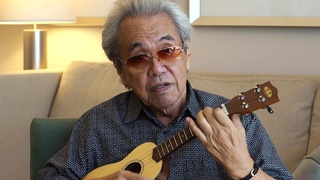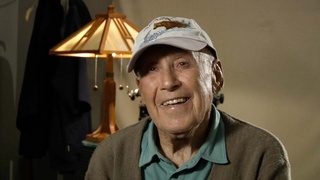Interviews
Appearance vs. Combat Effectiveness
In the military there’s a very, very strong belief that if you polish your shoes and press your pants and salute right and you’re clean, then you’re a good combat soldier. And so for the military, appearance in a sense is related to combat effectiveness. And nothing could be further from the truth. See? The 100th is the last…is the worst looking outfit, if you’re going to look at it from appearance, they’re the wrong height, they’re the wrong everything.
Now if you take the boys the islands, it’s even worse, cause over half the men in my platoon never wore shoes before, cause they were from a plantation. So they wouldn’t tie their shoelaces. See? Cause the feet hurt, I mean they really hurt, see. The other thing is that, since they didn’t tie their shoelaces, they didn’t blouse their pants inside their shoes or put leggings on. The other things too, it’s hot and humid in Shelby and so they wore their shirttails out like Hawaiian style, like I’m wearing now, see? And the other things is that they wouldn’t get a haircut, see?
So now I’ve got a crew that I’m trying to make get haircuts, put their shirttail in and tie their shoelaces and that’s almost an impossible task you know, it’s 44 against 1, you know and now trying to train a whole company I got a 180 of them, 190 of them you know, rebelling. And, sure I could get a few NCOs to do it and what not but I never succeeded in ever getting them properly “groomed” shall we say military style. But when I got in combat, I learned that those values are meaningless. That, that has no relationship to whether a man is combat effective.
Date: August 28, 1995
Location: California, US
Contributed by: Watase Media Arts Center, Japanese American National Museum
Explore More Videos


How he got on the All-Navy show on Ed Sullivan
(b. 1934) Ukulele player from Hawaii

Meeting Hamako in Japan
(1916 - 2013) Member of the U.S. Military Intelligence Service

Meeting Mr. Amano
(1916 - 2013) Member of the U.S. Military Intelligence Service

Marriage and Returning to US
(1916 - 2013) Member of the U.S. Military Intelligence Service

Feeling prejudice while looking for jobs
(1919 - 2015) Nisei who served in World War II with the 442nd Regimental Combat Team

Generosity of the Italians
(1919 - 2015) Nisei who served in World War II with the 442nd Regimental Combat Team

Invited to teach at Harvard by his boss
(1919 - 2015) Nisei who served in World War II with the 442nd Regimental Combat Team

Being inducted into the army
(b. 1921) Nisei veteran who served in the occupation of Japan

Serving in Tokyo
(b. 1921) Nisei veteran who served in the occupation of Japan

Father’s Optimism
(b. 1934) Award-winning Disney animation artist who was incarcerated at Topaz during WWII

Tanforan Assembly Center
(b. 1934) Award-winning Disney animation artist who was incarcerated at Topaz during WWII

Father making shell brooches at Topaz
(b. 1934) Award-winning Disney animation artist who was incarcerated at Topaz during WWII

Grandfather picked up by US Army
(b. 1952) Former banking executive, born in Hawaii

Painting murals and signs in the army
(b. 1938) Japanese Peruvian incarcerated in Crystal City

Discover Nikkei Updates


June 25 (US) | June 26 (Japan)
Featured Nima:
Stan Kirk
Guest Host:
Yoko Murakawa

See exciting new changes to Discover Nikkei. Find out what’s new and what’s coming soon!
